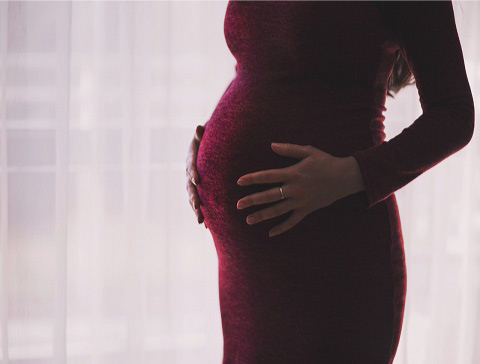MSU psychologists received additional grant funding for their Prenatal Stress Study, allowing them to follow participants until 4 years of age and examine early markers of psychopathology.
December 9, 2020 - Caroline Kraft
The Prenatal Stress Study began in 2016 with an R01 from the National Institute of Child Health and Development (NICHD). The principal investigators on this project are Alytia Levendosky, Ph.D., G. Anne Bogat, Ph.D., and Joseph Lonstein, Ph.D., professors of Psychology at MSU, and Maria Muzik, M.D., M.S., Associate Professor of Psychiatry at Michigan Medicine. The co-investigator is Amy Nuttall, Ph.D., an assistant professor of Human Development and Family Studies at MSU.
 The goal of this longitudinal study is to examine the effects of prenatal and postnatal stress on children’s self-regulation and early markers of psychopathology. The researchers also measure mother-child relationship qualities and the mothers’ stress response systems as mechanisms of the effects of stress on children.
The goal of this longitudinal study is to examine the effects of prenatal and postnatal stress on children’s self-regulation and early markers of psychopathology. The researchers also measure mother-child relationship qualities and the mothers’ stress response systems as mechanisms of the effects of stress on children.
A growing body of research suggests that prenatal stress may program various aspects of the physiology of the offspring and their brain development, particularly the hypothalamic-pituitary-adrenal (HPA) axis and other areas of the brain like the amygdala and hippocampus, which are involved in emotions and learning.
While many experts agree that the prenatal period is a sensitive period for brain development, it is doubtful that each period within the prenatal period is equally susceptible to the negative effects of prenatal stress. The brain does not develop uniformly, so some parts of the brain are more sensitive during certain points of fetal development than others.
“The HPA axis tends to develop in the mid to late prenatal period whereas the sympathetic nervous system is one of the first things to develop. So you might expect that the sympathetic nervous system would be more sensitive to insult in the period of early pregnancy than the HPA axis,” Levendosky said.
Previous longitudinal studies on prenatal stress have assessed maternal prenatal stress at just two or three points during the pregnancy, but the current project is the first to look at prenatal stress weekly throughout a pregnancy.
“What we are doing that is unique is that we are assessing prenatal stress at every week of pregnancy as soon as women enroll in our study, which typically is at 15 weeks,” Levendosky said.
In this study, women complete a 20-item online questionnaire each week assessing their stressors in the past week and perceived stress levels. Additionally, at three points during the pregnancy, women come into the lab to complete questionnaires about social support, mental health, and pregnancy health related behaviors. During each lab visit, the researchers collect a saliva sample before and after participants complete a stress task. Researchers then examine those saliva samples for analytes linked to the functioning of the HPA axis and the sympathetic nervous system.
After the mothers give birth, mothers and their infants visit the lab several times. Mothers’ mental health is assessed at one-month post-partum and at each of the waves. When infants reach six months of age, the researchers examine both behavioral and physiological reactivity and regulation. They code infants’ fear and anger in response to two different stress tasks and examine mother-infant interactions.
The most recent grant NICHD (August 2020) allows the team to continue assessing these participants until the children reach the age of four. This will allow them to examine the development of self-regulation in these young children and monitor the early markers of psychopathology, such as internalizing (anxiety and depression symptoms) and externalizing behaviors (aggressive and disruptive behaviors). Since children’s brain development is not as rapid after birth, mothers will complete online questionnaires every three months, rather than weekly, with the same set of 20 stress-related questions as well as questions that are directly relevant to their child. This data will help researchers determine through machine learning which periods prenatally and postnatally are the most susceptible to stress in influencing children’s development of behavior problems.

